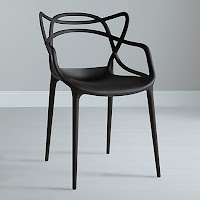Urban Design is at the crossroads of Architecture and other disciplines like civil engineering and Sociology. So, as a Product Design Engineer, it is rather out of my ballpark. Regardless, I have taken quite an interest in it. Studying both Leon Krier and Le Corbusier, perhaps the most divided views on this subject, I have arrived at quite a complex situation. I have also ended up getting myself halfway though both 'housing design quality', a rather dry academic view at the policy and economic aspect of the situation, and Deyan Sujic's 100 Mile City.
Krier, for the uninitiated, is regarded as an ardent Neo-Traditional, who, though a selection of witty drawings, and passionate articles, argues for us to reclaim our Architectural history, and forget Modernist persuasions. He argues that visually, we should use both local vernacular, and monumental Neo-Classicism. But more importantly, he argues that we should aim to re-create the cityscape of traditional european cities consciously, that is to say, that the effect of the tangled roads of places like London and old Barcelona should be planned out, in order to deliver good quality public space.
Corbusier, swept up in the vibe of the early 20th century, argued something completely different. He believed that the automation and efficiencising of industry would liberate people with more free leisure time. He planned his cities based on the idea that we would all sleep and eat in vertical tower blocks, connected by efficient highways to our work and to each other. His conceptual city plans, such as 'Ville Radieuse', spaced out blocks in generous parkland. Theoretically, to provide efficient connection to our essential needs, but also to enable us to, with the time provided by said efficiency, connect to our surroundings and nature.
Now obviously, retrospectively, there is a huge amount on negative impact in Le Corbusier's legacy. One spawn of his impact is the 'tower in the park', a design that was wholeheartedly accepted by the developers, politicians and social engineers of the post-war period, as a way to cheaply, effectively, and efficiently deal with slum conditions, and lack of housing in the lower classes. Living in Glasgow, I can confidently say that yes, this was a failure. The sight of these blocks literally scares me. A lot of these, in Glasgow, have been demolished. Most of the infamous Gorbals are gone, and Red Road is to be got rid of soon. They seem to have isolated and compartmentalized their residents, whist the middle classes are happy to continue the sprawl outwards into the greenery.
Another condition I believe to be relativly unadressed, is that it seems our current particular breed of 'starchitecture' was conceived by Le Corbusier. The postmodernists of the 80's thought they had torn modernism to shreds when they put a silly roof on a skyscraper, but what they failed to address was the actual impact this kind of architectural D*ck-measuring was having on the cityscape. Again, bringing it back to Glasgow, the recent Clydeside development, contributed to by the likes of Zaha Hadid, and presented as a vision of the new, cultural Glasgow, is actually a barren wasteland as far as I can see; broad, tall, magnificent, neo-futuristic, concrete and glass structures emerge from nowhere from the neighboring car-parks. An area with 2 TV studios, 2 Museums, a National Convention center and a gigantic auditorium is basically empty besides the peak flows just before an event. This tradition stems from the monumentalism first delivered by Corbusier's Ronchamp Chapel, his state buldings in Chandigarh, and projects such as Frank Lloyd Wright's Guggenheim.
Now, there is some nuance here, the BBC Scotland building, the most 'modernist' of them all at the Clydeside, is the only one I haven't got tired of. And with regard to the concrete tower block, it was adopted because it was cheap, and those 60's blocks have ignored the sensitivity that Corbusier seems to have adopted with his built Unite d'habitation blocks. But the point remains that he was essentially wrong. No amount off well proportioned interior space can convince the majority to give up their gardens and quiet roads. And it doesn't seem that many of those modernist architects themselves would have.
Leon Krier attempts a different Post-Modernism than the likes of Zaha Hadid and Rem Koolhaas. His argument is propely in favor of traditional development. Although I haven't been there, Poundbury, Krier's plan sponsored by the Prince of Wales, in Dorset, seems to be at least an exceptionally interesting place. The road network is consciously scattered, and the homes are a blend of vernacular and classical, fronting directly on the roads, and forming squares and other interesting linear public spaces. This is a total departure from modernism, and it is convincing. It seems like 'normal' people wouldn't mind living in places like this. Krier has dropped a random city center into the middle of a field, and it seems to work.
This is actually very confusing though. Inspired mainly by great Product Design, I am in admiration of many of the modernists. I do believe that neutral, uncluttered spaces are both livable and comfortable. But the confusing junction that is Urbanism is the big tear at the seams. Should I still wear all black?!?
No, i'll still wear all black, it makes me feel cool and intelligent. And yeah I still think that both Postmodern and traditional product design tend towards the ugly. There is however, in conclusion, a quote from each that I can fully agree with. Krier Says:
"The city is the focus and purpose of design, the giver of meaning; individual buildings are born out of its order and requirement. They are never isolated works of art in and of themselves. The city is the work of art. Otherwise sick to sculpture and painting, which is private... and achievable.Corbusier states, on a slight different topic:
"The styles of Louis XIV, XV, XVI or Gothic, are to architecture what a feather is on a woman's head, they are pretty sometimes, but not always, and nothing more."This would place me, ideologically, if I was to be so brash at this early stage of my career, somewhere close to David Chipperfield, in terms of visual Architectural language; but in very close agreement with Krier over the overall shape and form of what a city should be.
It seems unfortunate to ditch the moral conclusivity of the early modernists, but it does seem that rectangles can't be the solution to everything.










































